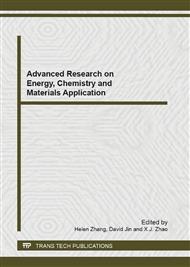p.223
p.227
p.231
p.236
p.240
p.246
p.251
p.255
p.259
Resource Potential Classification Evaluation of E2S42 Shale Oil in Damintun Depression
Abstract:
Shale oil resource potential classification evaluation is needed to precisely calculate the resource potential and prepare for the prediction of shale oil sweet spots. Geochemical analysis results shows that the E2S42 shale in Damintun Depression has strong hydrocarbon generation capacity. The classification evaluation criteria of E2S42 Shale oil in Damintun Depression was established according to the triple-division characteristic of measured TOC vs. S1. The shale oil oiliness parameter S1 was obtained by using improved logR method. The loss of hydrocarbon was recovered by chemical kinetics method. Volumetric method was used to calculate different grades of E2S42 shale oil in Damintun Depression. Grade I resource is 334 million tons. Grade II resource is 33 million tons. Grade III resource is 15 million tons. Grade I resource accounts for over 90% of the total resource content. High value area mainly concentrated near Well Shen223 and Well Shen224. Results shows that the E2S42 shale in Damintun Depression has good resource potential.
Info:
Periodical:
Pages:
240-245
Citation:
Online since:
November 2013
Authors:
Price:
Сopyright:
© 2014 Trans Tech Publications Ltd. All Rights Reserved
Share:
Citation:


